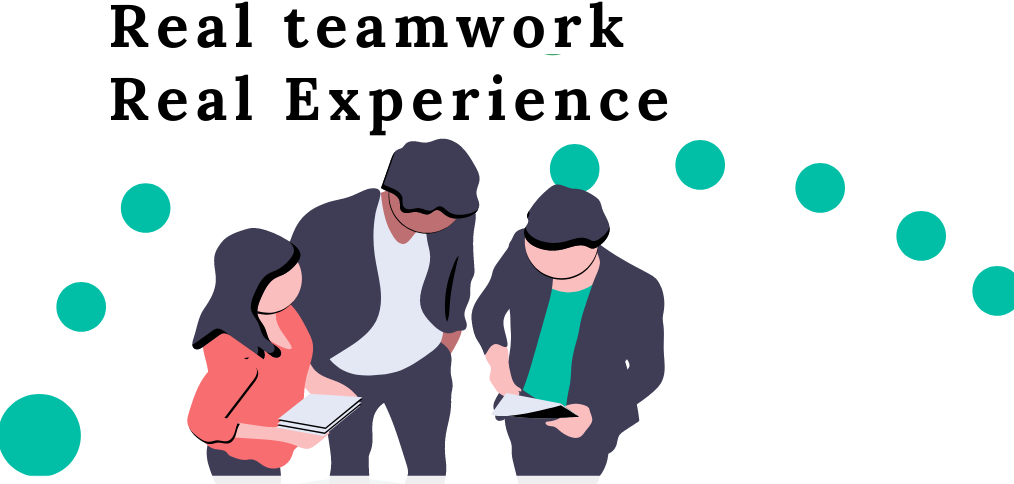Skillembassy
Digital platform for system developments with international project teams using freely available implementation tools.
Skillembassy brings together enthusiasts from the fields of product management, design and development into agile groups to develop and launch products within a few months. The topic of cooperation becomes a challenge whenever several people from different cultural backgrounds have to work on a project and have to coordinate, distribute and follow work results and tasks with each other. See Skillembassy as well.
1 Initial Situation
The recruitment of skilled personnel is no longer done locally. Experts from other countries will also be involved. Support from Eastern European countries is currently being requested. IT specialists from West African countries, for example, are neglected. There is a great potential hidden here. The University of Ghana alone records several hundred engineering graduates every semester. In the absence of regional job offers after graduation, they work in occupations outside training or leave their home country for Europe in order to find a qualified job. This situation is unsatisfactory and awaits improvement from which all sides can benefit.
To make matters worse, there is a very high level of “innovation pressure” in the development of software due to increased competition, progressive globalisation and the associated cost pressures. This means that innovation cycles are accelerating, thereby shortening the life of the product (or the results of a development). The products must therefore not only be of high quality and comparatively cost-effective, but also developed quickly.
2 Idea
Within the framework of the Skillembassy, a digital platform for the implementation of system developments with international project teams and using computer-aided planning models will be implemented. The roles of Product Manager, Quality Manager, Configuration Manager, Developer, and Designer are distributed and supported. The project team is formed from a mixture of experienced staff and a percentage of graduates. This ensures a favorable cost structure and at the same time re-educates highly motivated experts who, after a few project assignments, can already act as multipliers themselves.
3 Concept
All stakeholders (project managers, quality managers, configuration managers, developers, designers) receive templates about your activities and the products to be created. These templates must be completed and worked out with the personal elements (e.B. logo, design). The project work can therefore start without delays and very effectively. For each project phase, for each project status and for each work step, there are templates available. Templates are provided for the following freely accessible tools. All tools run in a browser and do not require any installation.
- Miro, for working out ideas together on an online whiteboard (miro.com)
- Figma, design tool for real-time collaboration and file version management (figma.com)
- Jira, project management tool to improve the planning and coordination of development projects. (atlassian.com/software/jira)
- Trello, online-tool for project management and mantain personal tasks (trello.com)
- GitHub, network based service for version management of software development projects. (github.com)
- Slack, channel-based communication platform for effective collaboration, with the option of connecting the above software tools with one another (slack.com)
- Google Meet, video conference platform for exchanging information at regular project meetings. Training courses for young professionals are offered as well. Presentations are conveyed using the ‘share screen’ function. (https://meet.google.com)
- Skillembassy, meta-platform that brings together the above services and provides appropriate templates for different projects as well as offers help and teaching material. (skillembassy.com)
Project Roles
- for the product manager e.B. supporting tools for management, project communication, documentation
- for the quality manager e.B. supporting tools for testing, Q-management, documentation
- for the configuration manager e.B. supporting tools for managing the development configuration, documentation, communication
- for the developer/designer supporting tools for design, development, testing and implementation, high-level language compilers, DBMS and related tools, latest products on the market and their evaluation, further literature, etc.
Phases
The phases in a development project are:
1 Creation of quotations
- Load/duty booklet and/or requirement specification (from the client’s point of view)
- Technical and/or commercial offer (from the point of view of the offeror or the later contractor)
2 Development
- requirements analysis
- preliminary design
- detailed specification
- implementation
- Integration
3 Use/operation
- Deploy to use
- Support
Process Automation
The planning tool supports:
- to define or specify the task exactly
- in the case of clean structuring, it is necessary in the initial phase to
- define and describe the interfaces
- To assign tasks and resources
- Identify and adapt standards to specific requirements
- Determine the organization and communication in the team
- Provide development tools, ready-made modules, program libraries, programming language, database management system, communication protocols, and/or documentation environment
System Development
It provides a platform that meets the following requirements:
- Support for all phases
- Support for all roles and their activities
- Logical matching and harmonisation of activities
- Supporting the requirements for maintaining and modifying the developed system
- Support for quality requirements according to ISO9001:2015
- Integration of external resources and/or products
- Integration of purchased parts
- Simple and practice-oriented use
- Internal communication
- Represents the state of the art
Project manual, quality manual, work breakdown structure, product structure and configuration plan are created. This includes the support of the quality standard according to ISO 9001ff, in the procedure according to V-model the possible implementation in a quality management (QM) manual.
Re-Engineering
This is a special feature for re-engineering existing systems (includes special procedures, activities, and products to choose from):
- Analysis / evaluation, technology, effort, special problems
- preliminary design
- detailed specification
- implementation
- Integration
- Support
Re-engineering is treated separately, since the concrete necessary services are “set up” on a specification, e.B. as a result of an analysis, study and/or other requirements. Only then can the concrete activities and necessary products be generated. In general, the products and activities must be ensured that work is carried out within the framework of an existing system; in this respect, there are corresponding differences to the “pure” development.
Integration
System integration means that the system consists of both finished components (purchase parts, components of the shelf (COTS)) and specially developed components. All components that have been released via quality management are integrated into the overall system. Some activities that are part of system development may therefore be eliminated.
Site-Services
Help desk, newsletter, email support. Communities, Wizards, Daily News. In an expansion phase of the company, up-to-date information is offered on the Internet in order to ensure a high and up-to-date level of information for the project participants. Information on specific topics can be exchanged through a community.
Training (Seminars, Workshops, etc.)
Training can be offered for further development and integration work.





